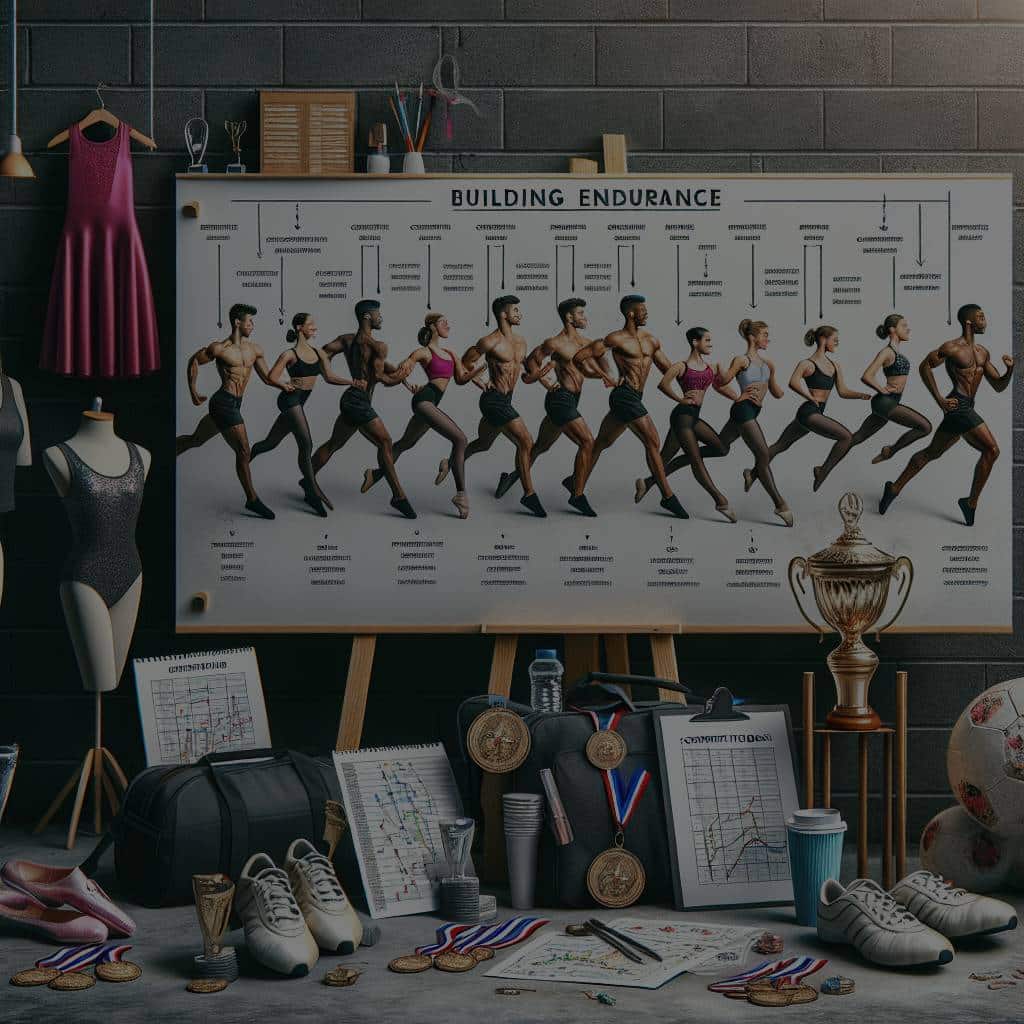What’s the Best Approach for Building Endurance in Competitive Dance?

When we think of dancers, we often imagine graceful, flexible figures gliding across the stage, but behind the glamour and grace, the reality is a lot of hard work, sweat and relentless training. Just like any athlete, dancers require a combination of strength, stamina, and endurance to perform their best. Whether it’s a grueling rehearsal schedule or a high-energy performance, dancers need to be physically prepared to meet the demands of their craft. As such, building endurance is a critical component of a dancer’s training regimen.
In this article, we will delve into the various strategies and exercises that can help dancers build and sustain endurance. We will also explore why these elements are vital for a dancer’s physical well-being and performance.
In parallel : How Can Goal-Oriented Training Be Applied to Improve Competitive Swimmers?
Understanding the Importance of Endurance in Dance
Before we discuss the strategies for building endurance in dance, we need to understand why it’s crucial. In the world of competitive dance, routines can be physically demanding requiring not only physical strength but also mental toughness.
Endurance is the ability to withstand fatigue and to maintain a certain level of intensity over an extended period. When a dancer has good endurance, they can perform longer routines with less fatigue. This translates to maintaining high energy levels throughout a performance, and consistently executing movements with precision.
Also read : How Can Mountain Bikers Train to Improve Technical Downhill Skills?
Building endurance also helps to prevent injuries. When a dancer’s muscles are fatigued, they are more prone to injuries. Therefore, improving endurance can mean fewer injuries and more time spent dancing rather than recovering.
Strength Training for Dancers
Strength training plays a major role in building endurance. It involves exercises that aim to improve the strength and function of muscles. This doesn’t mean dancers need to bulk up, but rather, they need to strengthen their muscles to support their bodies during long periods of dancing.
Strength training exercises like squats, lunges, and planks can benefit dancers by developing the core, leg, and upper body muscles. These exercises help dancers hold their body in the correct posture, maintain balance, and execute complex moves with less effort.
Moreover, strength training can help dancers improve their jumping ability, one of the key skills in many dance styles. Exercises such as plyometrics – quick, powerful movements that improve muscle power – can be particularly beneficial.
Stamina Building Exercises
Stamina and endurance go hand in hand. Stamina is the ability to sustain prolonged physical effort, a key requirement for dancers who often have to perform intense routines for extended periods.
Cardiovascular exercises like jogging, swimming, or cycling can significantly improve a dancer’s stamina. These exercises increase the heart rate and improve the body’s oxygen utilization, allowing dancers to perform at high intensity for longer periods.
High-Intensity Interval Training (HIIT) is another effective way to build stamina. This form of exercise involves short bursts of high-intensity exercise followed by recovery periods. HIIT can also help improve a dancer’s recovery time, allowing them to bounce back quicker after a grueling routine.
Incorporating Flexibility and Balance Exercises
While strength and stamina are pivotal, a dancer’s endurance also relies on their flexibility and balance. Flexibility allows dancers to execute a wide range of movements with ease, while good balance enables them to maintain control of their bodies during complex routines.
Yoga and Pilates are excellent practices for improving flexibility and balance. They incorporate stretches and poses that target various muscle groups, helping dancers become more limber and improve their body control. Additionally, these practices promote mindfulness and concentration, which can aid dancers in maintaining focus during performances.
The Role of Nutrition and Rest in a Dancer’s Endurance
Finally, a dancer’s diet and rest play a crucial role in building and maintaining endurance. Proper nutrition provides the energy needed for training and performances. A balanced diet rich in lean proteins, carbohydrates, and healthy fats can fuel a dancer’s body efficiently, allowing them to train harder and longer.
Rest is equally important. The body needs time to recover and repair muscles after intense workouts. Adequate sleep and rest days in a dancer’s schedule are essential in preventing fatigue and overtraining.
In the highly competitive world of dance, endurance is not just about physical prowess. It also involves a strong will, determination, and resilience. Building endurance takes time and patience, but with the right training, diet, and rest, dancers can improve their stamina, deliver impressive performances, and enjoy a long, fruitful dancing season.
Cross Training: A Secret Weapon for Competitive Dance
Cross training is the practice of participating in various forms of exercise to enhance overall performance, and it’s a secret weapon for many dancers. By engaging in different activities, dancers can work various muscle groups, improve their strength power, and ultimately, enhance their endurance.
For instance, taking a swimming session can provide a low-impact workout that strengthens the muscles without putting stress on the joints. Cycling, on the other hand, can help build leg strength and cardiovascular endurance. These activities can significantly contribute to a dancer’s overall stamina and capacity to perform intense dance routines without quickly tiring.
Additionally, cross training introduces variety into a dancer’s training regimen, reducing the risk of boredom and burnout. It can also help dancers avoid overworking certain muscle groups, which can lead to injuries.
Another form of cross training that can be particularly beneficial for dancers is martial arts. Disciplines like karate, tai chi, or capoeira can improve a dancer’s coordination, strength, and control. They can also be a great way to build mental resilience and focus, which are crucial for performing dance routines in front of an audience.
When incorporating cross training into your routine, remember to listen to your body and avoid overdoing it. The goal is to complement your dance classes, not replace them.
Foot Control, Hip Hop Influence, and Other Tips for Dance Training
Foot control is an often overlooked but crucial aspect of dance training. The feet are the foundation of many dance moves, from the pointed toe in ballet to the intricate footwork in hip hop.
Speaking of hip hop, incorporating its elements into dance training can help enhance endurance. The energetic and dynamic moves in hip hop dance can help build cardiovascular strength and improve stamina.
Remember, the goal in training for competitive dance is not just to be able to dance for extended periods, but to do so with grace, precision, and power. So, while you’re working on building your strength endurance, don’t neglect your technique. Focus on executing each movement with precision. The more efficiently you can perform each move, the longer you’ll be able to keep dancing.
Ashley Daychak, a renowned expert in the dance arts, has also emphasized the importance of visualization in dance training. Picture yourself executing each move perfectly, and keep this image in mind as you train. This mental exercise can help improve your technique and increase your confidence on the dance floor.
Conclusion: Endurance in Competitive Dance – A Balance of Many Elements
In conclusion, building endurance for competitive dance involves a combination of strength training, cross training, stamina-enhancing exercises, flexibility and balance practices, as well as proper nutrition and rest. However, it’s also about mental toughness and willpower.
Remember, training for dance is not a sprint but a marathon. It takes time, patience, and consistent effort to improve your endurance. So, pace yourself, listen to your body, and make sure to take rest days to allow your body time to recover.
As competition season approaches, dancers may be tempted to push themselves to their limits in every training session. However, this can lead to burnout and injuries. It’s crucial to maintain a balance between pushing yourself and providing your body with the rest and nutrition it needs to recover and grow stronger.
Endurance in competitive dance hinges on careful preparation, smart training, and patience. With these elements in place, dancers can look forward to delivering impressive performances and enjoying a rewarding and successful dance competition season.
